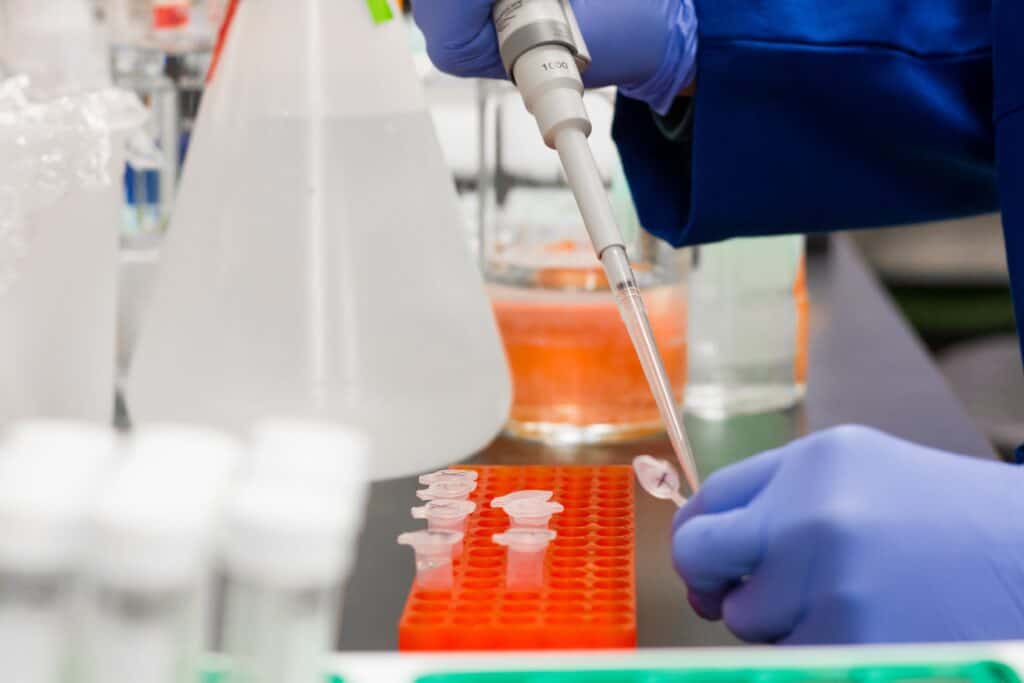Messenger RNA (mRNA) is an attractive therapeutic agent because it can deliver gene-replacement therapies for inherited metabolic diseases. Lipid nanoparticle-mRNA vaccines have already entered clinical trials to treat ornithine transcarbamylase deficiency, methylmalonic acidaemia and propionic acidaemia12.

Flexibility
Lipid nanoparticles are a versatile, robust, non-viral platform for delivering genetic material to cells. They have the potential to both induce gene expression and inhibit it through the delivery of siRNA, oligonucleotides or mRNA, which can be used for protein replacement strategies in diseases such as muscular dystrophies, vaccine production, or reprogramming cancer cells to create anti-tumor immune responses.
Flexible lipid nanoparticle formulations can be designed to achieve cell-specific and organ-specific delivery by incorporating structural alterations in the lipids used for their fabrication. For example, a lipid’s alkyl length can alter the particle size’s dynamic range and modulate its incorporation into cells or organs. The main components of lipid-mRNA nanoparticles are phospholipids, cholesterol, and lipid-anchored polyethylene glycol (LAPEG), the ratio of which can significantly impact a formulation’s potency. Using the Design of Experiment methodologies, including Definitive Screening and Fractional Factorial Designs, optimizing these ratios and thereby increasing the efficiency of lipid-mRNA nanoparticle-based cellular uptake is possible. In addition to these cellular targeting factors, the particle size of lipid-mRNA nanoparticles can be modified to avoid reticuloendothelial cells, which can recognize large particles as foreign and activate an inflammatory response. Therefore, the particle size of lipid-mRNA formulations must be limited to less than 200 nm, allowing them to evade these RES cells and reach the desired cellular target.
Biodistribution
Messenger RNA (mRNA) is an appealing therapeutic tool for protein replacement therapy, vaccination and cancer immunotherapy. However, one key barrier for mRNA therapeutics is its delivery into cells. Non-viral systems such as lipid nanoparticles offer the potential for cost-effective and efficient gene delivery. Lipid nanoparticles can be prepared using various methods, including high-pressure homogenization (HPH) and nanoemulsion techniques. The HPH technique uses a shear, cavitation and turbulence effect to form spherical particles with controlled sizes. The size of a particle can be modified by altering the temperature, lipid concentration and surfactant used in the preparation. Various lipids form the lipid nanoparticle core matrix and stabilizers, such as polyethylene glycol or dioleoyl phosphatidylcholine (DOPC). Cationic lipids such as 1,2-di-O-octadecenyl-3-trimethylammoniumpropane (DOTMA) complex with the oligonucleotide, neutralizing charges and condensing long oligonucleotide chains. The resulting complex is then delivered into the cell using clathrin- and caveolae-mediated endocytosis. Once the lipid nanoparticles reach the cell, they interact with the cellular membrane and fuse with its lipid bilayer through electrostatic interaction. Fusion then promotes the release of mRNA into the cytoplasm, where it can be translated by the host cell. Recent studies have shown that lipid nanoparticle-mRNA combinations can improve immune responses in preclinical models. Intellia Therapeutics has recently commenced a phase I clinical trial of NTLA-2001, a lipid nanoparticle encapsulating mRNA coding for anti-PD-1 and T cell-inducing molecule OX40L in patients with hereditary transthyretin amyloidosis.
Biocompatibility
Developing lipid nanoparticle formulations that enable effective mRNA delivery to cells requires a thorough understanding of the physicochemical and biological factors influencing encapsulation, transport and cellular uptake. This knowledge is essential to ensure the intended biotherapeutic can be injected into a living organism without eliciting an unintended, unwanted, or dangerous host response. Lipid-based mRNA encapsulation systems comprise a mixture of ionizable lipids, cholesterol, helper lipids, and stabilizers that interact with negatively charged mRNA molecules to protect them from endosome degradation and facilitate their escape from these compartments into the cytosol. Lipids’ composition and ratios primarily determine encapsulation efficiency, ionizable lipids (N:P) polarity, and particle size. In addition, selecting a target cell type is an important factor for optimizing mRNA-nanoparticle delivery. The mRNA-nanoparticle conjugate binds a specific receptor on the target cell’s surface, enhancing cellular uptake and minimizing off-target side effects.
Lipid-based mRNA encapsulation and targeted cell uptake strategies achieve this goal. Using ionizable lipids allows for more efficient targeting of APCs, and including a functionalized APC-binding moiety enhances cellular uptake.
Safety
Thermostability and scalability are important for producing stable nanoparticle formulations in physiological conditions, avoiding aggregation, and maintaining their RNA cargo integrity. Lipid nanoparticles can be stabilized with different excipients such as surfactants, polymers, and cryo-protectants. Lipids can be selected with a high melting point or low lipid content to reduce thermal stress during lyophilization and reconstitution.
Cryo-protectants such as sucrose and trehalose are typically added to the formulation before lyophilization. These excipients, also known as cryoprotectants, solidify into an amorphous glass around the particles during freezing and prevent particle fusion during rehydration. The addition of trehalose was reported to stabilize NLC/saRNA complexes and retain their ability to drive protein expression in vivo for up to 10 months under refrigerated conditions. An increasing number of drugs need better water-soluble, making them more challenging to deliver via traditional drug delivery techniques that require dissolution in the bloodstream or tissues. Novel lipid-based carrier systems can provide a more effective way to have such compounds while minimizing systemic exposure and potential side effects. Lipid-based SLNs can be formulated with a targeting moiety that binds the appropriate receptor on the target cell to improve cellular uptake and evade degradation in endosomes. These strategies are ideally suited for targeting cancer cells.
